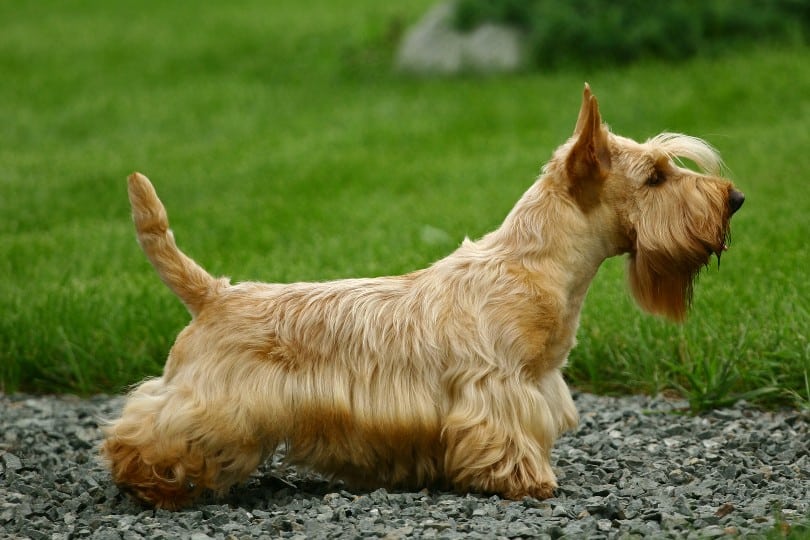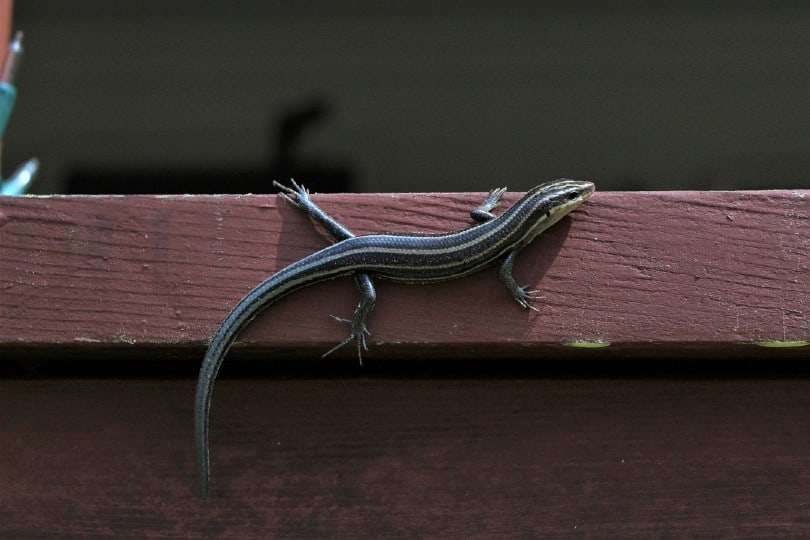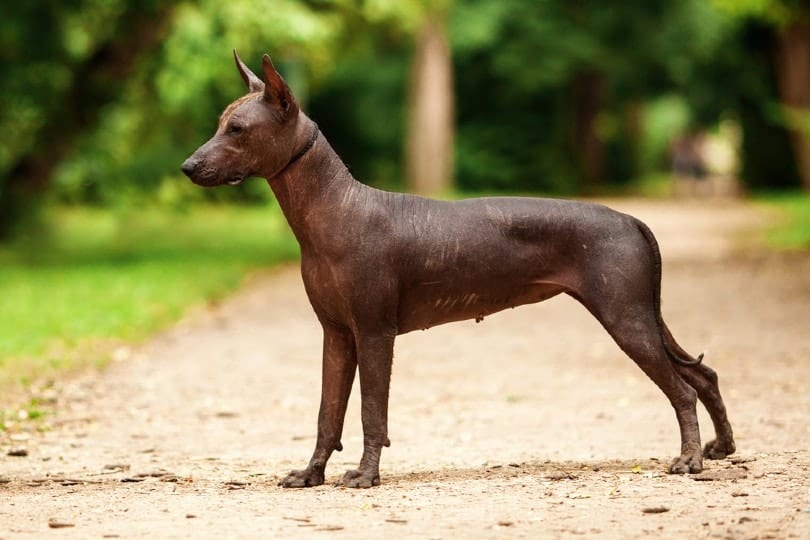Unfortunately, there is no such thing as a truly hypoallergenic dog. If you suffer from dog allergies, there is a possibility that any dog, regardless of the breed, will trigger a reaction in you. That said, Scottish Terriers are considered to be more hypoallergenic than most other breeds, but all this means is that your risk of allergic reactions is lower. Let’s learn more about this.
What Triggers Dog Allergies in People?
Many people assume that dog fur is the culprit of allergies. Some have heard that the less hair a dog has, the less likely they are to cause allergic reactions. Dog hair is not what people are allergic to, though. Instead, a specific protein that is present in a dog’s skin, urine, and saliva is what triggers allergies. This protein is known as Can f 1 and is responsible for most pet allergies in people.
The protein is shed through a dog’s skin flakes or dander. The dander attaches itself to the dog hairs, and as those are shed around the house, the dander can wind up covering furniture, landing on surfaces around the home, or being inhaled. All dogs shed some level of dander.
Dogs that don’t shed much are considered hypoallergenic because less shedding means less dander spread around the house. Less dander means fewer allergic reactions. Scottish Terriers are low-shedding dogs, so they spread less dander than dogs that heavily shed, like German Shepherds. This doesn’t mean that you won’t ever have an allergic reaction if you own a Scottish Terrier, although it is possible. It simply means you will have fewer reactions and be more comfortable with a dog in the house. Also, the protein allergen is still present in their urine and saliva, even if they’re considered a hypoallergenic breed.
When dog dander is inhaled or dog saliva makes contact with your skin, your immune system will begin to attack the Can f 1 protein. The body will attempt to destroy the allergen, and your body can react the same as if you have a virus or bacterial infection.
Symptoms of a dog allergy reaction include hives, itchy skin, sneezing, itchy or watery eyes, runny nose, cough, postnasal drip, facial pressure, and congestion. If your allergy triggers asthma, you may experience difficulty breathing, chest pain, or shortness of breath.

What to Do If You Have Dog Allergies
If your dog allergies are mild, meaning they don’t trigger asthma or make you unable to breathe when you’re around dogs, you may be able to live with a dog that is considered hypoallergenic if you take a few steps to protect yourself.
Wash your hands after petting, touching, or playing with your dog. You don’t want to accidentally rub your eyes or face and trigger a reaction.
If you must, dedicate one room of your house as a dog-free zone where you can go and get relief if your allergies are bothering you.
Brush, comb, and bathe your dog as necessary to reduce dander spread. Your vet may even suggest a certain shampoo to help reduce dander even more.
Vacuum, dust, and wipe down surfaces regularly to remove dander. Use a mop to wipe down walls. The less dander you inhale, the better you’ll feel.
Use an air purifier to clean and recycle the air in your home, removing dust, dander, and other debris before it has a chance to settle on your home’s surfaces.
Take medications to help your allergies, such as over-the-counter antihistamines. Ask your doctor which medicine would work best for you.
Conclusion
There is no such thing as a 100% hypoallergenic dog, but a Scottish Terrier produces less dander than many other breeds. They shed less, so the dander stays on them instead of winding up around your home. If you’re looking for a dog that won’t affect your allergies, you’d have better luck with a Scottish Terrier than a dog that sheds heavily.
You can still own a dog even if you’re allergic to them, provided that your symptoms are mild. Talk to your doctor about medication options. If you live with a dog already, do your best to keep your home environment clean and free of dog hair to reduce your symptoms.
]]>


